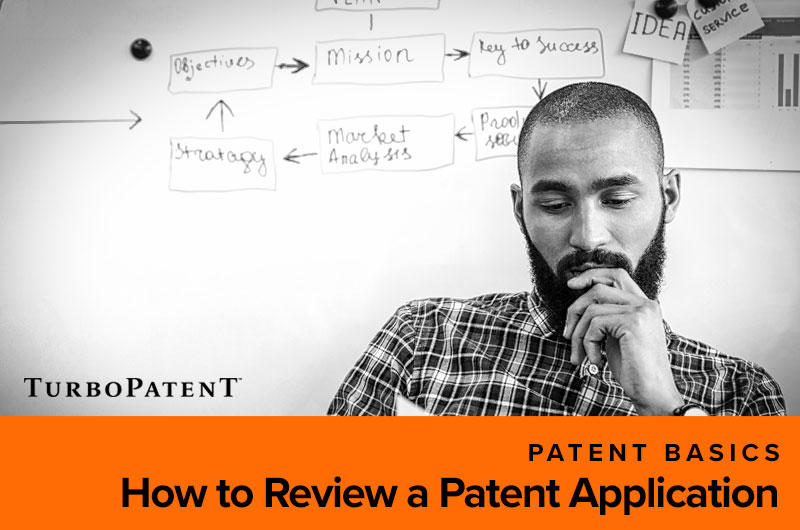Patent Basics: How to Review a Patent Application
On this blog, we have covered the parts that make up a patent application as well as the importance of patent application quality. With this background, we can now dive into how to best review a patent application.
When reviewing a patent application for filing with the USPTO, there are two main things to check for:
- problems with the form
- problems with the substance
It is vital to catch both types of issues before filing the application because problems with the form or substance can significantly delay the grant of a patent and increase the overall cost of obtaining a patent.
Problems with the Form
Problems with the form of a patent application can be returned by the USPTO as either objections or rejections. Generally, a patent examiner issues an objection when he/she would like something changed, but can still understand the patentable concept. A rejection is more serious and is issued when the examiner is unable to understand the patentable concept. Typically, objections are the result of sloppy drafting, while rejections may also be the result of more substantive problems.
Grounds for Objection
Because objections typically result from sloppy drafting, they’re fairly easy to prevent with careful review. Here are some examples of errors that commonly cause objections:
- A duplicate claim
- A claim that depends from a cancelled claim
- The introduction of new matter into the specification by an office action response
- A misdescriptive title
- Inconsistent numbering between drawings and the detailed description (e.g., 1A, 1B, 1C versus 1, 2, 3)
A search of the Manual of Patent Examiner Procedure provides a more exhaustive list of grounds for objection.
Objections should rarely, if ever, be issued. A strong draftsman (or an A.I. review tool, like the RoboReview tool used in TurboPatent’s drafting services) should catch problems that cause them.
Grounds for Rejection
Although rejections are typically related to the substance of a patent application, they can also be issued in response to problems with the formalities of the application. For example, rejections can stem from issues, such as the:
- lack of antecedent basis
- lack of support for a term in the claims
- use of a reference number not shown in a drawing
- use of indefinite terms
Typically, the claims are rejected for problems with form under the sections of 35 U.S.C. 112. Again, a strong draftsman should be able to catch all the problems that result in such a rejection. Thus, if an application draws a rejection under 35 U.S.C. 112, it is likely a sign that a draftsman failed to properly draft the patent application.
While skilled draftsmen (typically a patent attorneys) can spend time and mental power screening for these problems, this is probably not the best use of their time and, since the client is typically paying them hundreds of dollar per hour for their time, also not the best use of the client’s money.
Our TurboPatent Engineers (TPEs) use our AI-based tools to eliminate problems that can result in an objection or a rejection due to problems with the form of an application. Thus, our technology-aided drafting services enable our TPEs to focus on accurately describing the substance of an invention.





